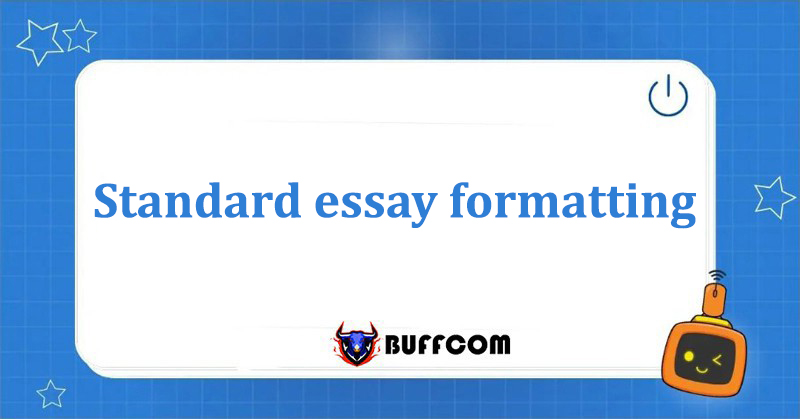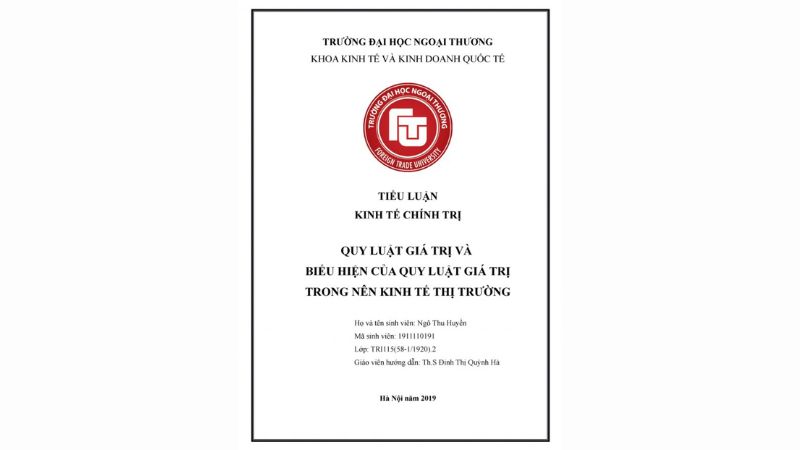Standard essay formatting for students

As a student, everyone has written essays for their courses and graduation theses. However, in addition to paying attention to the content, paying attention to the form is also one of the factors that determine your grade. Not everyone knows how to format essays correctly, which can result in unfortunate point deductions. In this article, Buffcom.net will guide you on how to format essays correctly.
What are Essays and Graduation Theses?
An essay is an academic document in the form of a text, presenting the author’s research, viewpoint, or discovery on a specific topic or issue. In addition to essays, there are other academic documents such as graduation theses, dissertations, academic reports, etc., to serve the purpose of studying and scientific research.
In universities, the length of a student’s essay is usually only 10-20 pages, depending on the regulations of the school and the requirements of the course lecturer. Graduation theses, or dissertations, will be much longer, up to 60-80 pages depending on the school, and of course, the requirements will also be higher.

Standard essay formatting
Common Misconceptions in Formatting Essays
When writing an essay, many people only care about the content but forget to spend time formatting the essay correctly, or present it according to their own intuition and preferences. On the other hand, some students think that presenting essays need to be impressive with many images and unconventional arrangements.
These are all mistaken thoughts because academic texts have specific formatting rules that require seriousness rather than breakthrough creativity. Presenting essays professionally is also how you can score points and get the approval of the course lecturer, while presenting in a “flashy” way can actually lead to “lost points.” So what are the rules for formatting essays correctly? Let’s find out in the next section with Buffcom.net.
What is the structure of an essay, thesis in standard format?
An essay or thesis can vary in length and content, but generally the structure should include the following sections (in no particular order):
- Cover page: The cover page should be formatted according to the requirements of each institution, as each institution will have its own specific requirements. You need to have a hard copy and an inner cover/ back cover. The cover page should include complete information such as the name of the institution, faculty, school logo, title of the topic, student name, student ID, class, instructor, time and place of writing the essay.

Standard essay formatting
- Introduction and Acknowledgment.
- Table of contents: including 3-4 levels of headings (maximum of 4) and at least 2 sub-headings in the same level.
- List of tables, figures…
- List of abbreviations, technical terms (if available).
- The content can vary depending on the type of essay or thesis, but the most common outline used is theoretical/ logical basis -> current situation -> solution.
- References list.
Requirements for Presenting an Essay in Word in Detail
- Paper size: A4 (201mmx297mm), page orientation: portrait (vertical)
- Print on one side only
- Margins: top, bottom: 2.0->2.5 cm, right: 2.0 cm, left: 3.0->3.5 cm, Header & Footer: 1.5 cm (depending on the requirements of each school and instructor)
- Font: Times New Roman (using Unicode encoding)
- Font size: 13 (can use font size 14 for chapter titles)
- Line spacing: 1.2-1.3 lines.
- Automatic page numbering and table of contents. The first pages (acknowledgments, table of contents, comments from the instructor, list of tables, figures…) are numbered in Roman numerals (i, ii, iii, iv), the content section (including the table of contents) is numbered in Arabic numerals (1,2,3…), appendices are not numbered.
- Name and student ID number (SID) in the header or footer on each page
- For illustrations and tables, there should be a caption and title for each image or table.
Some Notes on Citing Reference Materials
- Reference materials must be arranged separately by language (Vietnamese, English…). Keep the original text without translation, and do not transcribe foreign documents.
- The order of the reference list in each language follows the alphabetical order of the author’s name (if the author is a foreigner, it is ordered by surname, including translated documents into Vietnamese and listed in the Vietnamese section)
- When listing reference materials, all necessary information must be provided: serial number, author’s surname and name, title of the document (article), source (journal name, volume, issue, year of publication, publisher, place of publication…)
- Citations of reference materials in the essay must follow the serial number of the reference list and be placed in square brackets, e.g., [1].
- Be sure to understand the requirements for citing reference materials: APA or Harvard… to present in the correct format.
Conclusion
The above are basic regulations for presenting an essay. It is hoped that with these instructions, you will have a properly presented essay that leaves a good impression with your instructor. Good luck! If you are interested in licensed software to serve your work, please contact Buffcom.net for more information!


